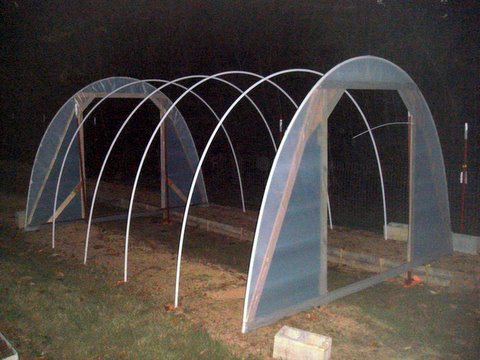How to Build a PVC Hoop House for Your Garden

Gardening tends to fascinate a lot of people, because it is a great way to keep you busy. It keeps you occupied and helps you do things that you wouldn’t normally do.
However, sometimes people tend to find their plants not growing as well as they want to. This is when you can go ahead and use a hoop house. This is a very basic form of a green house, which will protect your plants and garden.
It is a very cost effective and efficient way to solve your gardening problems, and it is something everyone should consider at least once.
Instructions
-
1
Mark and drive
The first thing you need to do, is to figure out just where you want to build the hoop house. Then you need to go on and mark out this area. Make sure you know the dimensions of your hoop house, so that you don’t have problems later on.
Now based on the dimensions that you have selected and the areas that you have marked, place a PVC pipe every 35-40 inches along the sides of the hoop house. You may cut the base of the pipe like spokes, so they easily fit into the ground. -
2
Get connector and form skeleton
Now the next thing you need to do is to get some PVC connectors. Once you have these connectors, you may start to attach the ends of the PVC pipes that are parallel to each other. You can follow a set pattern to doing this, but if you get ample connectors, you may explore the connection process yourself and do as you please.
However, what you need to focus on is building a decent skeleton with your PVC pipes, because their structure and lay out is going to be crucial to your hoop house. -
3
Secure and place sheet
Now after you have connected everything using the connectors, the next thing is to secure the pipes. This can be done via the usage of cement, or PVC glue. You have a number of options to do this, so follow the process that is the easiest for you to follow and use.
After having done this, you need to place a plastic sheet over the skeleton, so that it protects your plants. You may invest in a slightly thick sheet so that it can stop rain and other climate changes more effectively.




